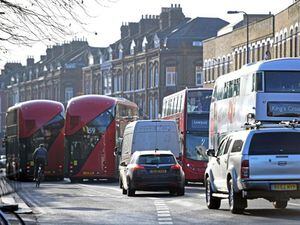Explained: London’s new Ultra Low Emission Zone
New set of rules are being introduced on April 8 to improve air quality in the capital

A new Ultra Low Emission Zone is to be introduced in central London on Monday. Designed to help reduce emissions in the city as well as cut congestion, it’s additional to the congestion charge and is likely to affect many drivers.
Here, we take a look at everything you need to know about the new zone (ULEZ) and what it may mean for you.
Where is the zone?
Initially, the ULEZ – which replaces the T-Charge – will apply to the same area as the London congestion charge, ie, inside the Inner London Ring Road.
However, from October 25, 2021, it’s going to be extended to the area within the North and South Circular Roads. The congestion charging zone will remain the same.
When does it operate?
The ULEZ zone will operate 24 hours a day, seven days a week, every day of the year.
This is in contrast to the congestion charging zone, which only operates from 7am to 6pm on weekdays and doesn’t operate on public holidays and between Christmas Day and New Year’s Day inclusive.
What will it cost me to drive in the zone?
If your vehicle is liable for the ULEZ, the fee is £12.50 a day for passenger cars – that’s on top of the existing £11.50 a day that motorists already pay for the congestion charging zone. When the ULEZ extends, you’ll be able to drive into that part of it without having to pay the congestion charge, although you’ll still have to pay the congestion charge if you drive into that particular zone.
Large lorries and vehicles over 3.5 tonnes will have to pay much more – the daily charge is £100 – and penalties are much higher as well.
Which cars have to pay?
It’s the older, more polluting cars that will be hit. To be exempt from the charge, petrol cars, vans and minibuses must meet Euro 4 emissions standards, while diesels will have to comply with more recent Euro 6 levels. Motorbikes must be Euro 3 classification or later.
It means that you’ll only be able to enter the zone without being charged when behind the wheel of a relatively new diesel or a petrol model in the region of 13 years old.
Are any vehicles exempt?
Some vehicles won’t be liable for the charge. Black taxis are first and foremost. Cars registered with ‘disabled’ or ‘disabled passenger vehicle’ tax classes will also be exempt – until October 26, 2025 at least. In addition, people who currently pay residents’ congestion charge payments will be given some time to replace their vehicles for ULEZ-standard models if they haven’t already.
Of course, electric vehicles and any that exceed Euro 6 standards won’t be stung for the charge either.
What are the penalties?
Failing to pay the ULEZ fee will be treated similarly to the congestion charge. You’ll be given a penalty of £160, which is reduced to £80 if you pay within 14 days. Of course, you’ll be able to appeal against the fine if you believe Transport for London has made a mistake, but you won’t be able to cite ignorance as a defence – the ULEZ will be clearly signposted at all entrances and exits.
For lorries and other large vehicles, the fine is much more severe – £1,000, reduced to £500 if paid within 14 days.
Is there an easy way to check if my vehicle meets the ULEZ standards?
There is indeed! Go to tfl.gov.uk/modes/driving/ultra-low-emission-zone/vrm-checker-ulez and enter your vehicle’s number plate details to find out if you’ll have to pay the charge.





